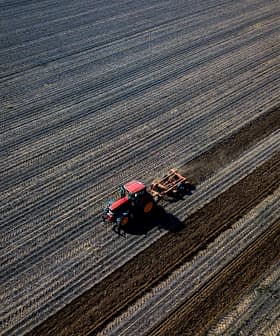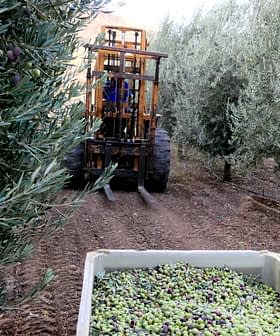Earlier this month, with preliminary harvest forecasts looking strong for California’s olive growers, the California Olive Oil Council reported an expected yield of a record 4 million gallons (15.14 million liters) of olive oil.
The prediction represented a huge jump from the 2.4 million gallons (9.1 milliom liters) produced in 2014.
Some, like The Olive Press’ Nancy Cline, concurred, reporting, “We’re very excited about seeing this bumper crop for 2015. The olives are coming in and we’re operating the press 24 hours a day. The oil is looking magnificent and we’re delighted.”
I think people are seeing the tonnage on the trees and assuming. Some jumped the gun.
Not so fast say a few others, whose high fruit yield may not translate into the jump expected in oil volume.
“That prediction might be a bit aggressive,” said California Olive Ranch CEO Gregg Kelley. “I can tell you we do see a large crop from a tonnage perspective. So on that front, all the news is true, and the quality is fantastic. We haven’t seen quality this high across the board for two or three years.
“But on the flip side, though our yields are high, heavy tonnage often indicates lower fat content,” Kelley cautioned. “It’s fine — we’ll likely net out about what we expected.”
Having begun in early September, COR won’t complete their harvest until mid-November. With the weather still a big factor in the harvesting process, Kelley said it’s wait-and-see on oil yield until then.
At the Cobram Estate California operation, Adam Englehardt was just coming from the processing plant when reached by phone. His take was similar to that of Kelley: “It’s better than last year, but I’d be surprised if it’s quite the bumper crop expected. I think people are seeing the tonnage on the trees and assuming. Some jumped the gun. But a heavy crop usually produces less oil than a light one.”
“The tonnage out of our fields is pretty good — average to above-average. But the yield is less than at this time last year, based on the fact that there’s not a lot of oil in the fruit yet.”
Weather is always a factor, Englehardt noted, with a warm, dry spring in 2015 and a lack of adequate irrigation stressing the trees. It’s not so much that they don’t bear fruit, he stated, reiterating that such conditions do not help to maximize the olives’ oil yield.








